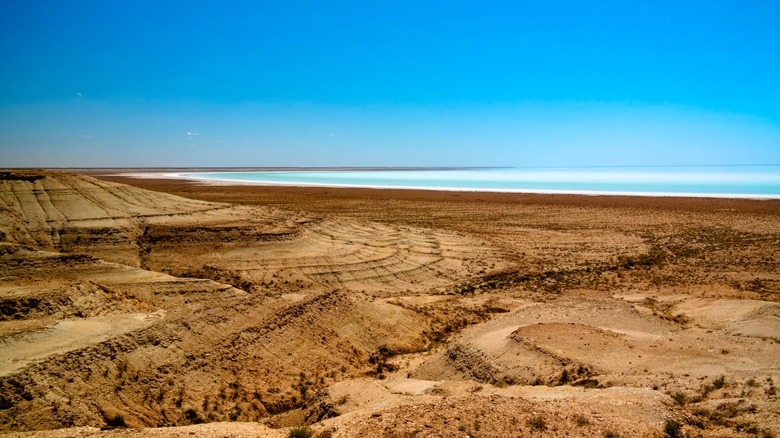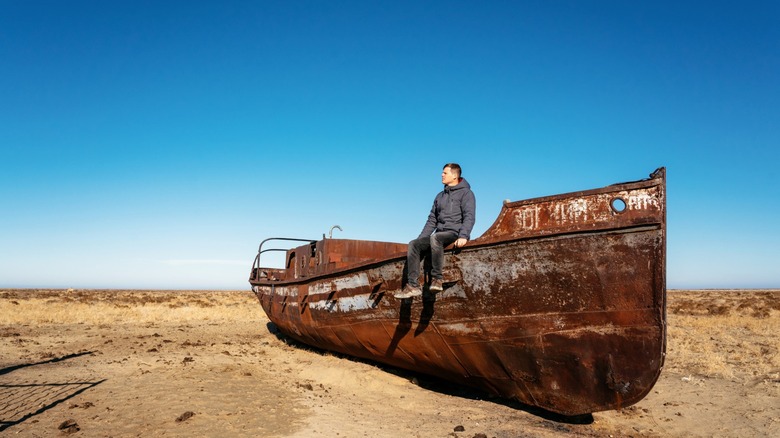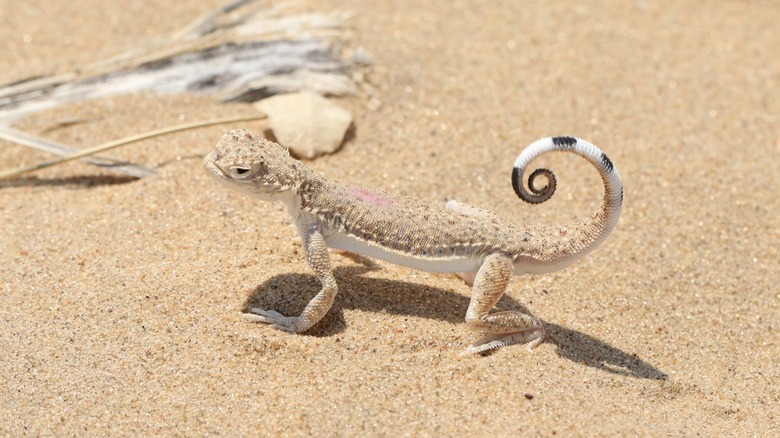Central Asia's Answer To Area 51 Is An Eerie Nature Reserve Said To Be Populated By Unusual Creatures
We all want to believe that true mysteries exist and that there are phenomena in the world that are unexplained by science and cannot be understood no matter how hard we try. After all, what sparks the imagination better than a spooky legend that spans generations and only gains more traction the longer it remains in the sphere of fantasy and miracles? Barsa-Kelmes, a former island in the now dried-up Aral Sea on the border between Kazakhstan and Uzbekistan, is the subject of many such eerie legends, the fantastic nature of which rivals those surrounding the desert base Area 51.
Kazakhstan is home to wonderfully strange attractions like the world's weirdest capital city, so it makes sense that the nature reserve surrounding Barsa-Kelmes possesses an eerie beauty and mirrors the beautiful desert scenery of Area 51. The landscape spans over more than 74,000 acres of windswept dunes, cracked soil, and low-lying brush that make a perfect backdrop for the island's alleged odd happenings, such as stopped watches and malfunctioning compasses. Time warps are also said to exist here; stories claim people have returned from the island after a short visit only to find that decades had passed. The persistent fog surrounding the isle only adds to its mystique and enhances perhaps the strangest reports, which include sightings of long-necked beasts, sea serpents that rise from the mist, and an egg-hatched creature with wings as long as sails and a giant beak full of teeth.
Visit Barsakelmes Nature Reserve and explore its legends
Barsa-Kelmes, also known as The Land of No Return, wasn't always desert-like, once being at the center of the Aral Sea, formerly the world's fourth largest lake and home to bustling fishing villages. However, due to a Soviet irrigation project that redirected tributaries, the Aral Sea has become the dryland we see today. Exploring Barsakelmes Nature Reserve requires a guide, as it is in a remote location over 100 miles southwest of cities like Aral.
The park's flat expanses and bare vistas make one feel as if they are utterly alone. Abandoned boats, camels, and the blindingly white seabed are some of the wonders you can see there, and the reserve is also perfect for some breathtaking photo ops. It's probably a good idea to wear comfortable clothing and walking shoes, especially if you want to explore the area for a while.
The former island seems to beckon visitors from afar like an ancient pyramid. It's hard to imagine anyone once living here but even harder still to imagine the tales of government explorers in Barsakelmes who have reportedly witnessed floating elliptical objects and a tank being pulled from the fog only to come back empty and covered in an unidentifiable icy substance.
See the wildlife around Barsa-Kelmes
Although Barsa-Kelmes' otherworldly creatures haven't been proven to exist, many real species of animals do live there. In fact, thousands of invertebrates, 30 mammal species, 178 bird species, and 20 reptile species call Barsa-Kelmes home, making the region a valuable UNESCO biosphere reserve.
Goitered gazelles, saiga antelopes, and Russian tortoises can be spotted here, along with an abundance of kulans, small horses resembling a mix between a pony and a donkey. Visitors can also look for toad-headed agamas, whimsical-looking lizards with pink cheek flaps and a curled tail. Wolves roam the peninsula, so exercise caution if you happen to come across one.
Kazakhstan is continental and experiences harsh winters, with average cold-season temperatures hovering around 15 degrees Fahrenheit. The region doesn't get much rain, and the best times to visit are in the warm summer months between June and August when the weather warms up to an average of about 72 degrees. If you have time for a longer trip, consider hopping over to Uzbekistan for glorious architecture that rivals Renaissance Italy.


